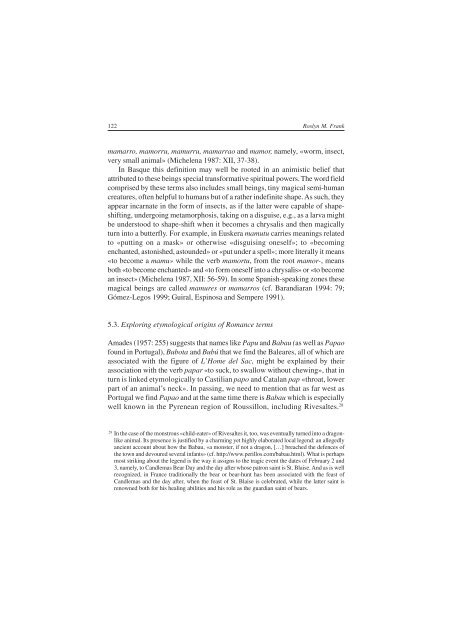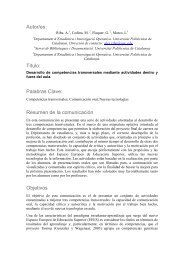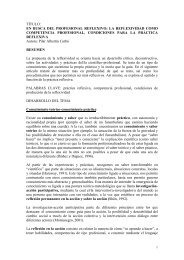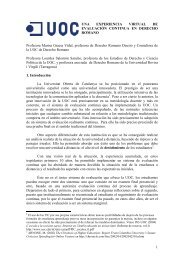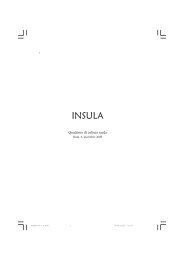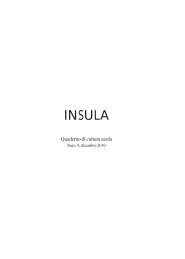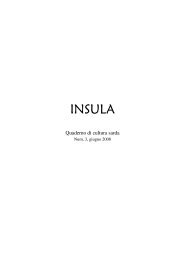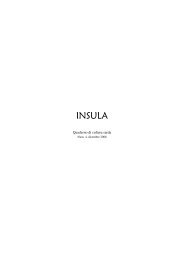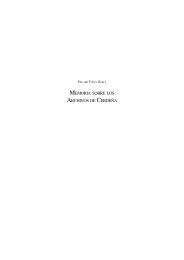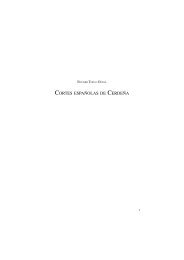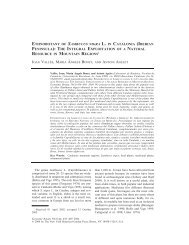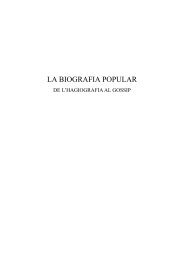Impaginato 5.p65 - Universitat Rovira i Virgili
Impaginato 5.p65 - Universitat Rovira i Virgili
Impaginato 5.p65 - Universitat Rovira i Virgili
Create successful ePaper yourself
Turn your PDF publications into a flip-book with our unique Google optimized e-Paper software.
122<br />
mamarro, mamorru, mamurru, mamarrao and mamor, namely, «worm, insect,<br />
very small animal» (Michelena 1987: XII, 37-38).<br />
In Basque this definition may well be rooted in an animistic belief that<br />
attributed to these beings special transformative spiritual powers. The word field<br />
comprised by these terms also includes small beings, tiny magical semi-human<br />
creatures, often helpful to humans but of a rather indefinite shape. As such, they<br />
appear incarnate in the form of insects, as if the latter were capable of shapeshifting,<br />
undergoing metamorphosis, taking on a disguise, e.g., as a larva might<br />
be understood to shape-shift when it becomes a chrysalis and then magically<br />
turn into a butterfly. For example, in Euskera mamutu carries meanings related<br />
to «putting on a mask» or otherwise «disguising oneself»; to «becoming<br />
enchanted, astonished, astounded» or «put under a spell»; more literally it means<br />
«to become a mamu» while the verb mamortu, from the root mamor-, means<br />
both «to become enchanted» and «to form oneself into a chrysalis» or «to become<br />
an insect» (Michelena 1987, XII: 56-59). In some Spanish-speaking zones these<br />
magical beings are called mamures or mamarros (cf. Barandiaran 1994: 79;<br />
Gómez-Legos 1999; Guiral, Espinosa and Sempere 1991).<br />
5.3. Exploring etymological origins of Romance terms<br />
Roslyn M. Frank<br />
Amades (1957: 255) suggests that names like Papu and Babau (as well as Papao<br />
found in Portugal), Bubota and Bubú that we find the Baleares, all of which are<br />
associated with the figure of L’Home del Sac, might be explained by their<br />
association with the verb papar «to suck, to swallow without chewing», that in<br />
turn is linked etymologically to Castilian papo and Catalan pap «throat, lower<br />
part of an animal’s neck». In passing, we need to mention that as far west as<br />
Portugal we find Papao and at the same time there is Babau which is especially<br />
well known in the Pyrenean region of Roussillon, including Rivesaltes. 28<br />
28 In the case of the monstrous «child-eater» of Rivesaltes it, too, was eventually turned into a dragonlike<br />
animal. Its presence is justified by a charming yet highly elaborated local legend: an allegedly<br />
ancient account about how the Babau, «a monster, if not a dragon, […] breached the defences of<br />
the town and devoured several infants» (cf. http://www.perillos.com/babau.html). What is perhaps<br />
most striking about the legend is the way it assigns to the tragic event the dates of February 2 and<br />
3, namely, to Candlemas Bear Day and the day after whose patron saint is St. Blaise. And as is well<br />
recognized, in France traditionally the bear or bear-hunt has been associated with the feast of<br />
Candlemas and the day after, when the feast of St. Blaise is celebrated, while the latter saint is<br />
renowned both for his healing abilities and his role as the guardian saint of bears.


